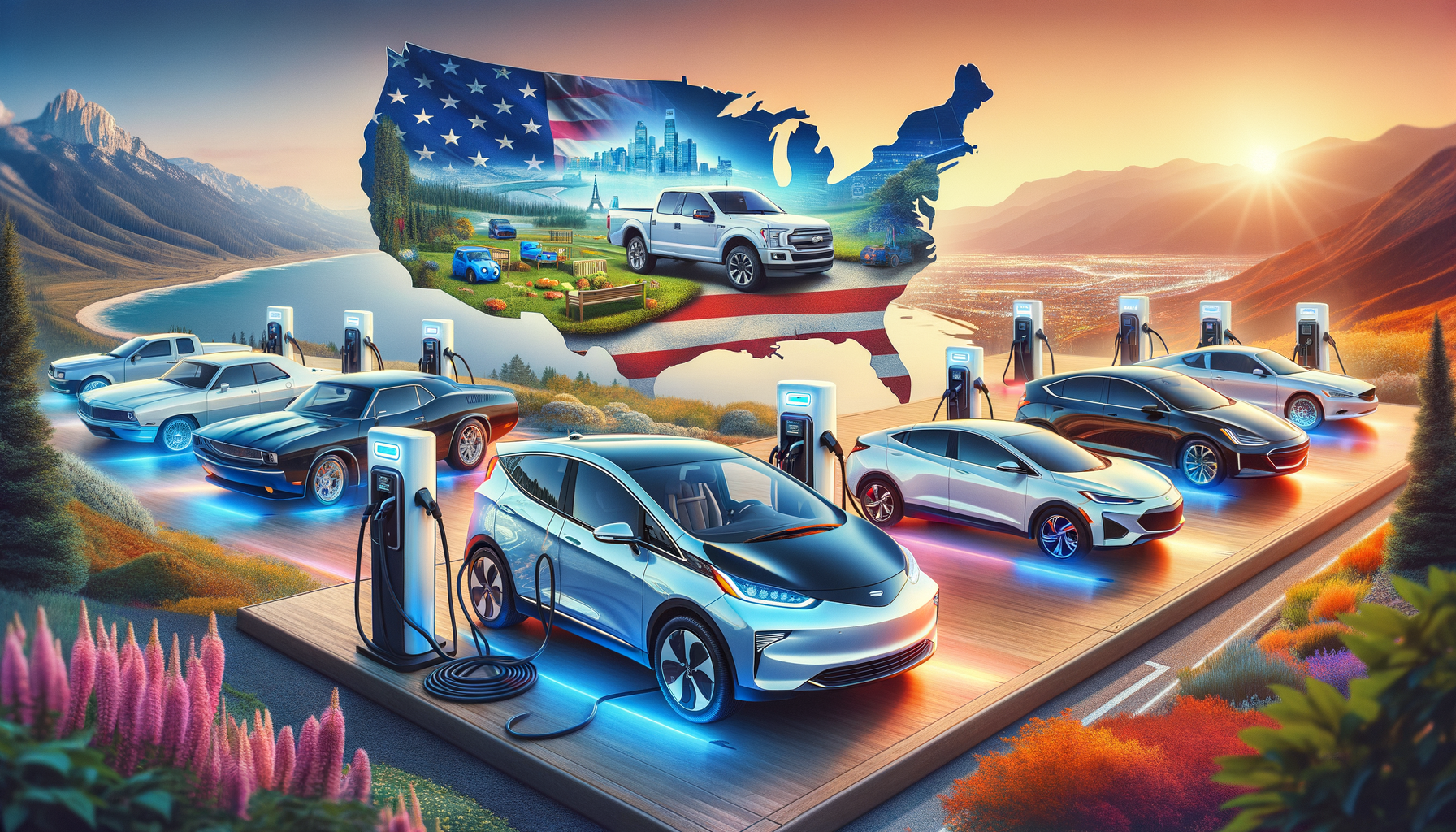Introduction to Electric Cars
Electric cars have been at the forefront of the automotive industry’s shift towards sustainable transportation. As concerns about climate change and fossil fuel dependency grow, electric vehicles (EVs) have emerged as a viable solution. These vehicles are powered by electric motors using energy stored in rechargeable batteries, reducing the need for gasoline or diesel. In the USA, the electric vehicle sector is rapidly evolving, with numerous models hitting the market, offering consumers a wide range of choices.
The importance of electric cars extends beyond environmental benefits. They also promise significant reductions in operating costs over their lifetime. While the initial purchase price can be higher than traditional vehicles, the savings on fuel and maintenance often offset this cost. Furthermore, advancements in battery technology are continually improving, making EVs more efficient and extending their range.
Understanding the infrastructure supporting electric cars, such as the charging network and vehicle range, is crucial for individuals considering making the switch. With a growing number of charging stations across the country, the convenience of owning an electric car is steadily increasing, making it a compelling choice for many Americans.
The Evolution of Electric Cars
Electric cars have come a long way since their inception. The first electric vehicles appeared in the late 19th century but were soon overshadowed by gasoline-powered cars due to their longer range and lower fuel costs. However, the resurgence of interest in electric cars began in the late 20th century, driven by technological advancements and environmental awareness.
In recent years, the electric vehicle market has seen exponential growth. This growth is fueled by improvements in battery technology, which have significantly extended the range of electric cars, making them more practical for everyday use. Moreover, government incentives and policies aimed at reducing carbon emissions have encouraged both manufacturers and consumers to embrace electric vehicles.
Today, electric cars are available in various models, from compact city cars to luxury sedans and SUVs. This diversity allows consumers to choose an electric vehicle that fits their lifestyle and needs. As the market continues to expand, the competition among manufacturers is driving innovation, resulting in more advanced and affordable electric cars.
Understanding Electric Car Charging Infrastructure
A critical aspect of electric car ownership is understanding the charging infrastructure. Unlike traditional vehicles that rely on gas stations, electric cars require charging stations to replenish their batteries. The availability and accessibility of these charging stations can significantly influence the convenience and feasibility of owning an electric vehicle.
In the USA, the number of charging stations is steadily increasing. Public charging stations are available in various locations, including shopping centers, parking garages, and along highways. These stations offer different charging speeds, from standard Level 1 chargers, which can take several hours to fully charge a vehicle, to fast Level 3 chargers, which can provide a significant charge in under an hour.
For many electric car owners, home charging remains the most convenient option. Installing a home charging station allows for overnight charging, ensuring the vehicle is ready to go each morning. Understanding the different charging options and planning charging times can help alleviate range anxiety, a common concern among potential electric vehicle buyers.
- Level 1 Chargers: Use a standard household outlet; slow charging speed.
- Level 2 Chargers: Require a special installation; faster charging speed.
- Level 3 Chargers: Also known as fast chargers; available at public stations.
Battery Technology and Vehicle Range
Battery technology is at the heart of electric vehicles, directly impacting their range, performance, and cost. The range, or the distance an electric car can travel on a single charge, is a crucial factor for many potential buyers. Improvements in battery technology have led to significant increases in range, making electric cars more appealing to a broader audience.
Most modern electric cars can travel between 150 to 300 miles on a single charge, with some high-end models exceeding 400 miles. This range is more than sufficient for daily commuting and short trips, but long-distance travel still requires careful planning and access to charging infrastructure.
The development of lithium-ion batteries has been a game-changer for electric vehicles. These batteries offer a high energy density, allowing for longer ranges without significantly increasing the vehicle’s weight. Research into alternative battery technologies, such as solid-state batteries, promises even greater efficiency and safety, potentially revolutionizing the electric vehicle market further.
- Lithium-ion Batteries: High energy density; most common in electric vehicles.
- Solid-state Batteries: Emerging technology; promises higher efficiency.
- Range Considerations: Varies by model; impacted by driving habits and conditions.
Conclusion: The Future of Electric Cars in the USA
The future of electric cars in the USA looks promising. With ongoing advancements in technology and increasing consumer awareness, electric vehicles are set to play a significant role in the nation’s transportation landscape. As battery technology continues to improve, and charging infrastructure expands, the barriers to electric vehicle adoption are diminishing.
For potential buyers, the decision to switch to an electric car involves considering various factors, including cost, range, and charging options. However, the benefits of reduced emissions, lower operating costs, and the potential for a more sustainable future make electric cars an attractive choice.
As the automotive industry continues to innovate, the range of electric vehicle options will only grow, offering consumers more choices and better performance. The shift towards electric vehicles represents not only a technological evolution but also a cultural shift towards more sustainable living. In the coming years, electric cars are expected to become a common sight on American roads, contributing to a cleaner and more efficient transportation system.




Leave a Reply